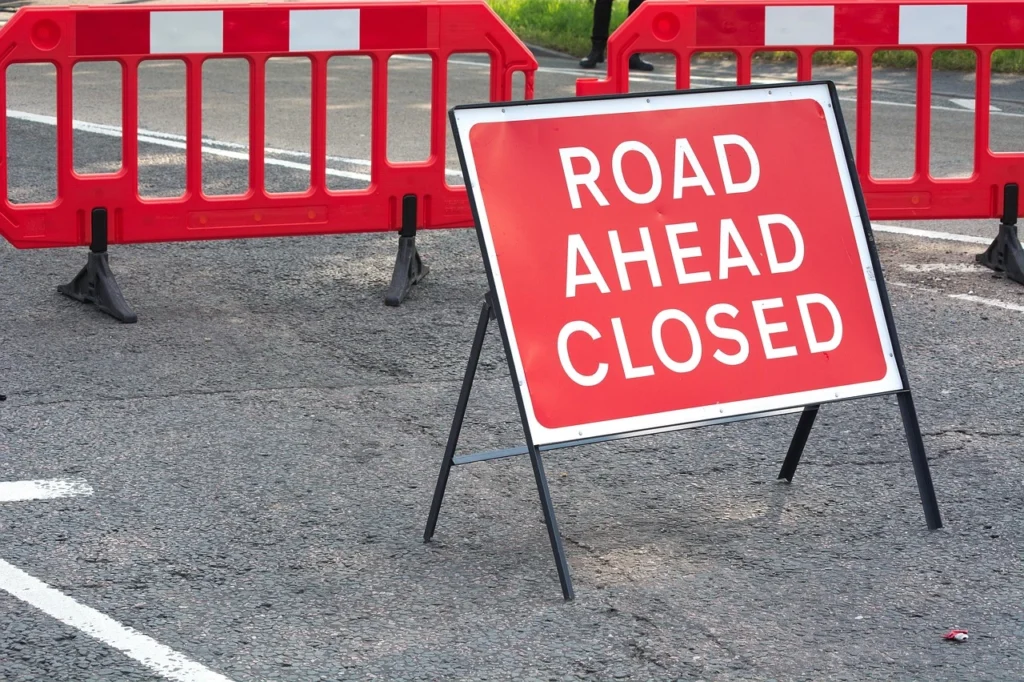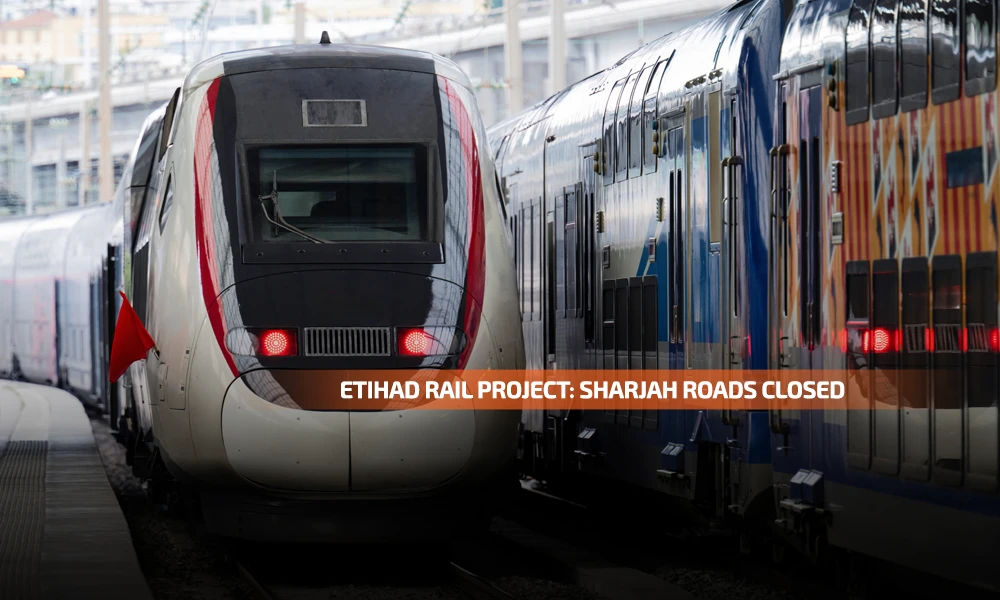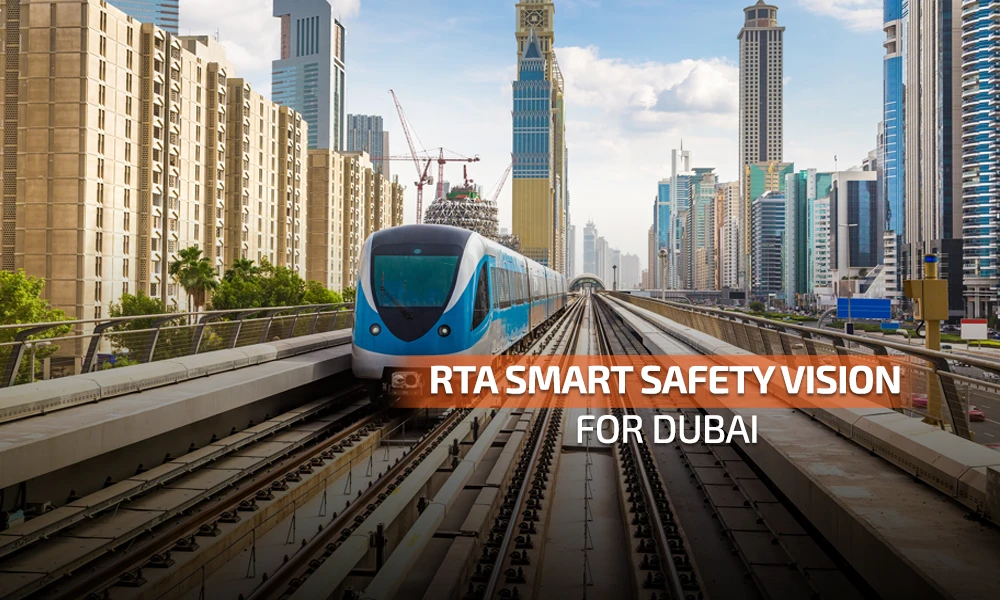So, you’re heading out in Sharjah, and suddenly—the road is closed. Detours. Delays, a bit of honking. What’s going on?
Don’t worry, it’s not just random chaos. It’s all part of something big. And by big, we mean Etihad Rail big. The long-anticipated Etihad Rail project is moving full steam ahead in the UAE, and this time, it’s Sharjah that’s feeling the shake-up.
If you’ve seen the roadblocks or heard about the closures, here’s the full scoop on why it’s happening, what routes are affected, and how this short-term inconvenience is paving the way for a future filled with next-level connectivity.
What Is the Etihad Rail Project, Anyway?
If you haven’t been following the UAE news, let’s get you up to speed—literally.
The Etihad Rail is one of the UAE’s most ambitious national infrastructure projects, aimed at creating a 1,200 km rail network linking all seven emirates from the Saudi border to the northernmost tip of the country.
Highlights of the Etihad Rail Project:
- Connects major industrial and residential hubs
- Reduces carbon emissions by 70-80% compared to road freight
- Includes both passenger and freight services
- Targets safer, faster, and more sustainable transportation
In short? The Etihad Rail opening is set to redefine travel and logistics across the country.

What’s Happening in Sharjah Right Now?
According to recent updates from Khaleej Times, several roads in Al Madam—a key area in Sharjah—have been closed for two months to make way for construction related to the Etihad Rail.
Key Road Closures:
- Al Madam – Maliha Road
- Routes near Al Batayeh and Al Faya
- Intersections connecting with Sharjah-Kalba Road
Don’t worry—alternative routes are being set up to keep traffic moving, but expect delays, detours, and revised travel times.
How Long Will This Last?
The road closures started in early July 2025 and are scheduled to last approximately two months. So, mark your calendars for mid-September, when you can (hopefully) resume normal driving routines.
Until then, it’s all about planning smarter.
How to Navigate the Closures Like a Pro
Roadblocks are frustrating, but your daily commute doesn’t have to be chaos. Here’s how to stay ahead of the curve:
1. Use Real-Time Navigation Apps
Apps like Waze and Google Maps are constantly updating to reflect live traffic data. Set your route before you leave and opt for alternative suggestions if congestion hits.
2. Leave Earlier Than Usual
With detours in place, give yourself extra time—especially during peak hours.
3. Carpool or Use Public Transport
If you can share rides or use public transport, it helps ease congestion and reduces the stress of navigating around closures.
Also Read: SOS Signs on the UAE Roads
Why Is Etihad Rail So Important?
These short-term closures might seem like a hassle now, but they’re setting the groundwork for one of the most transformative infrastructure projects in the UAE.
Here’s what the Etihad Rail opening will bring:
- Passengers travel between cities in record time (Abu Dhabi to Dubai in under 50 minutes!)
- Reduced road traffic and accidents
- Support for economic growth by connecting ports, logistics hubs, and free zones
- Boost to the tourism sector with easier cross-emirate travel
- Lower carbon footprint, aligning with the UAE’s net-zero goals
In essence, this project isn’t just about trains—it’s about building a smarter, more sustainable UAE.
What the UAE News Is Saying
As highlighted by both the Times of India and Khaleej Times, the focus is on keeping the public informed while construction is ongoing.
Officials are urging residents to stay alert, follow diversion signs, and check updates regularly.
UAE Traffic Police Reminders:
- Avoid using restricted roads unless absolutely necessary
- Follow signs to detour routes
- Be patient—this is temporary
Did You Know?
- The Etihad Rail project will feature passenger trains with speeds of up to 200 km/h.
- Each freight train can carry the equivalent of 300 trucks, reducing pressure on roads.
- The rail network will eventually connect to GCC countries, boosting regional trade.
That’s not just UAE news—that’s UAE making history.
What This Means for Sharjah Residents
While Sharjah’s role in the Etihad Rail project is currently making headlines for road closures, it also means the emirate is on the path to becoming a key connection hub.
Long-Term Benefits for Sharjah:
- Faster access to Dubai, Abu Dhabi, and Northern Emirates
- Better connectivity for students, workers, and tourists
- Economic uplift through increased logistics efficiency
- Safer roads with reduced truck traffic
So while it may seem inconvenient now, Sharjah residents will eventually benefit massively from this strategic rail integration.
Future-Proofing the Nation, One Rail at a Time
As the UAE continues to roll out its Vision 2030 strategies, projects like Etihad Rail are proof of the country’s commitment to innovation, connectivity, and sustainability.
It’s about more than just transport – it’s about transformation.
From desert roads to iron tracks, the UAE is building a future that’s fast, smart, and forward-thinking.
Quick Tips for Surviving the Closures
- Follow verified UAE news sources for traffic updates
- Use real-time navigation
- Practice patience—progress takes time
- Embrace public transport or remote working if possible
- Stay safe and avoid restricted zones
Also Read: New AI Radars in UAE: Watching Every Move on the Road
Final Thoughts: A Little Delay for a Big Leap Forward
Yes, two months of road closures may feel like a detour. But when you zoom out and see the big picture, it’s clear: the Etihad Rail opening is a game-changer. And Sharjah? It’s right in the middle of this incredible leap into the future.
So, buckle up for some short-term changes. Because soon, you’ll be gliding across the Emirates—not stuck in traffic.
Stay informed. Stay safe. And remember—it’s not a disruption.
It’s the foundation of a faster, smarter, connected UAE.







